If you associate the word hempcrete with concrete, you’re not far from the truth! Hempcrete is exactly what it sounds like it should be, hemp-based concrete. This versatile biocomposite is also widely known in the industry by the name of hemplime.
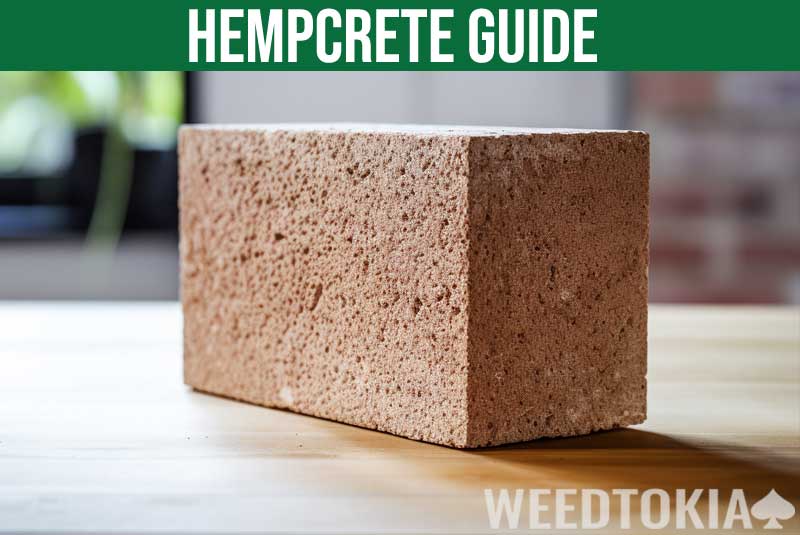
Hempcrete is a plant-based building material made from the inner wooly part of the hemp plant and processed with lime, sand, and pozzolans. It is recyclable, fire-resistant, and pest-resistant.
Table of Contents
Hempcrete Properties
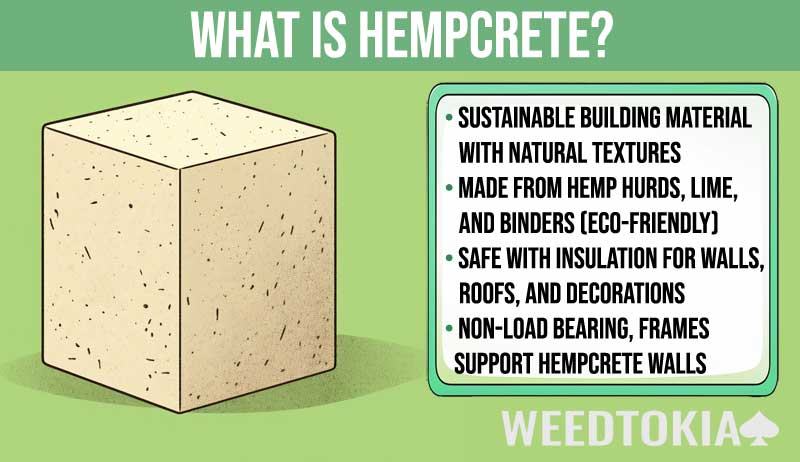
Hempcrete is a comparatively new biocomposite material made primarily of hemp hurds that uses lime, sand, or pozzoloans in its mixture to act as a binder.
According to the pertinent studies on this biocomposite, hemplime can be successfully applied to building applications like self-insulating walls, roofs, and even screeds.
Let’s get this important fact out of the way: Hemp is not the same as cannabis. Hemp is a much taller plant, and its extracts are not used recreationally to the extent of marijuana. The interior of hemp’s plant stems are wooly, and they can be converted to hard materials using binder agents. That’s why the hemp plant is used in construction and industry instead of recreationally.
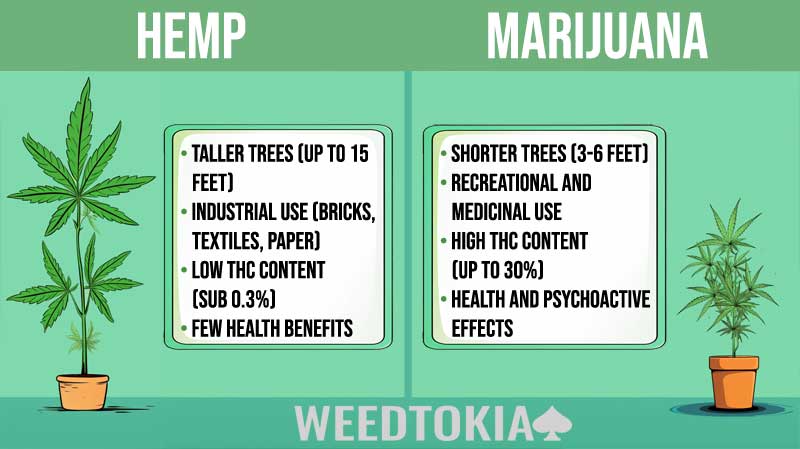
New technologies are being developed to better include hempcrete into our building practices, and so far, we’ve managed to make possible the application of hempcrete on all standard mineral substrates as an insulating lining as well as for the purpose of replacing the deteriorated cob in half-timbered walls.
We have to make clear that hemplime isn’t supposed to be a load-bearing material, as was reported by ASTM, a technical standard organization that formed a committee back in 2017 to address this. Henceforth, while building walls with hempcrete, it is cast around primary or secondary structural frames, let it be concrete, timber, or metal.
Hempcrete is an incredibly malleable building material. This access to malleability means that it’s categorized as an especially apt element for creating curved walls since it can easily take the form of the mold it is fitted to.
The walls are finished with natural lime plasters inside as well as outside, and the result is a plaster that effortlessly creates an exquisite natural texture loved by designers and architects alike. Such accessible malleability gives wings to creativity in design and can only result in incredibly unique structures.
A report on Global Newswire by Reports and Data in 2019 suggests that the global industrial hemp market is expected to amount to USD 13.03 Billion by the year 2026. This shouldn’t come as a surprise as we’re about to see how great of a building material hempcrete can be.
Interested in how this malleable and versatile material is made? You can learn how to make hempcrete from this video or from the director of UK Hempcrete, Alex Sparrow.
Building With Hempcrete
Hempcrete is an example of a hemp product mixed with other chemicals. It is commonly used as a concrete and/or an insulation system, and the mixture consistency is porous and thick. Employing hempcrete as insulation for a structure gets rid of all the plastic and gypsum on the walls. It is a greener and more environmentally conscious way to build.
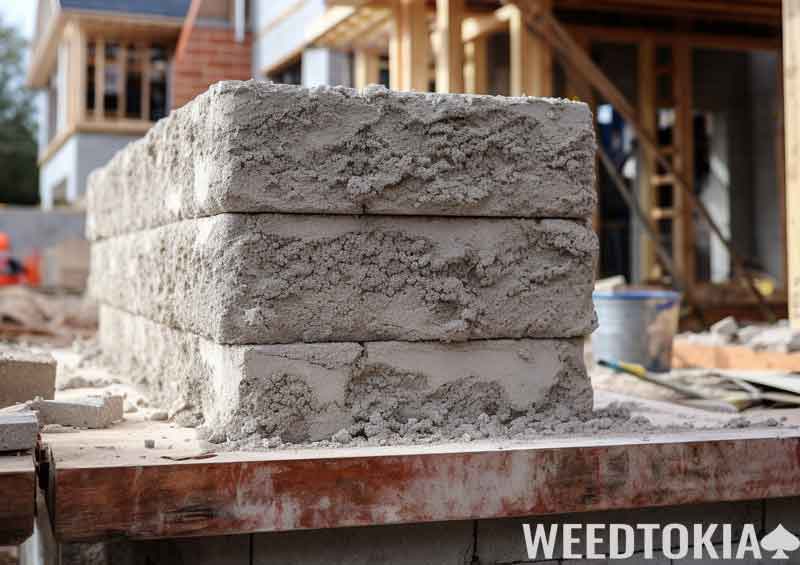
There is a thermal mass present in the hempcrete mixture due to the binding agent being the added lime, so what the hempcrete wall does is it enables the heat to accumulate on the wall and slowly irradiate it, thus allowing a relatively stable humidity level throughout the year. This newfound accessibility to more uniform temperatures and humidity translates to less energy consumption!
Hempcrete is considered a very safe insulation system for both the people living with it as much as for the workers setting everything up during construction. It doesn’t have any strong or chemically heavy smells or fumes that might make mixture preparation uncomfortable. As a matter of fact, a lot of construction professionals agree it has a rather pleasant all-natural aroma to work with.
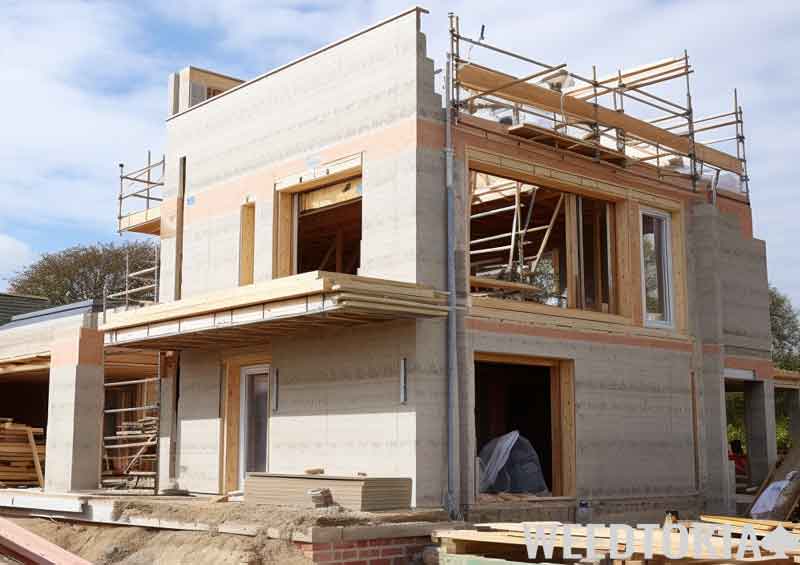
The utilization of hempcrete is a very low-tech method for building, and that is exactly what makes it such an accessible material for anyone that wants to learn about implementing it.
Hempcrete is very particular in that not only is there CO2 accumulated within the mixture already due to it being made out of biological plant material but during the drying time, hemplime absorbs and entraps more CO2; there are 50 kilograms of entrapped CO2 per square meter of hempcrete.
Benefits of Using Hempcrete
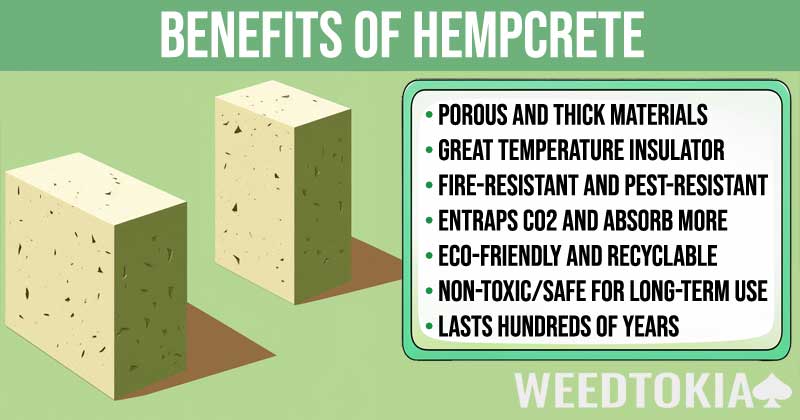
- Porous and thick materials.
- Great insulator for temperature and humidity.
- Fire-resistant and pest-resistant.
- Entraps CO2 naturally and the drying time allows it to absorb more.
- Eco-friendly and recyclable.
- Non-toxic/safe for long-term use.
- Estimated to last forever.
Disadvantages of Building with Hempcrete
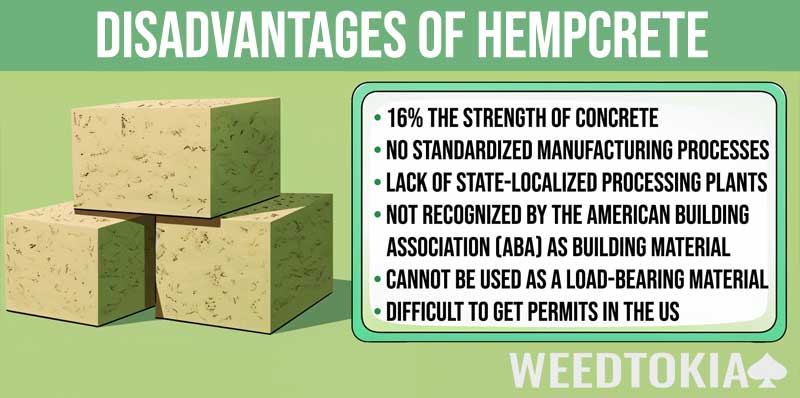
Hempcrete has been more commonly utilized on the other side of the globe, as Europe has had around thirty years to implement it into their building practices. On the other hand, in the United States, hempcrete hasn’t had the opportunity to be fully incorporated because hemp was made illegal with the Marijuana Tax Act of 1937. Thus, the experience of building professionals with hempcrete is, to this date, considered pretty limited.
We lack comprehensive information on material science. This is not to say that zero research has been done. For example, we know that hemp is a porous material and its structure has air pockets. Should the mixture be too light, these air pockets might result in a faster temperature increase, contrary to a denser and more uniform density of the mixture.
- Cannot be used as a load-bearing material.
- Approximately 16% of the strength of concrete.
- There are no standardized manufacturing processes.
- Construction work that is lime-based can require workers to have a certain amount of training.
- Very few companies in the United States specialize in building with hempcrete. It’s mostly used in Europe and Canada.
- Hemp hurds need to be imported.
- Lack of state-localized hemp-processing plants.
- Not recognized as a building material by the American Building Association, making it harder to get construction permits approved and building professionals to sign off on hempcrete projects.
Even though it may seem like the cons amount to more than the pros, it is important to remember that a lot of these issues are based on the US’s current inability to produce and process hemp locally, as well as our standing laws and building code.
In an environment like this, it isn’t unusual to expect a situation to change for the better as technologies advance and industrial hemp is given the attention it so clearly deserves in the United States.
Why Does Hempcrete Use Lime As a Binder?
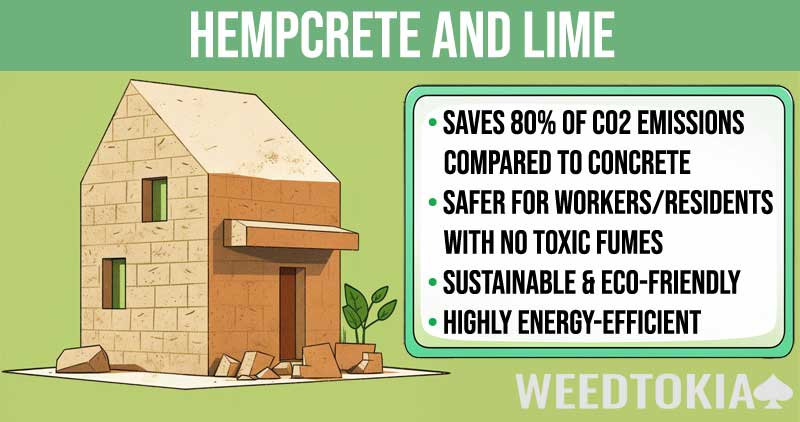
The usage of lime instead of cement as a binding agent will save approximately 80% of the CO2 emissions when in comparison to regular cement. Lime is a versatile calcium-containing mineral structurally comprised of hydroxide and oxides, hydrated lime is often the ‘sticky’ substance keeping the hemp hurds together.
Such a straightforward line of materials to create the hempcrete mixture ensures the safety of building professionals and the users of the structure because it does not release toxic fumes.
We’re all trying to move towards a more sustainable world, and in the scope of possible problems to fix, we encounter our habitual building practices. The traditional cement manufacturing methods release 850 kg of carbon dioxide into the atmospheric realm per ton as a repercussion of the chemical reactions needed to produce it. This means that this environmentally risky part of the process of producing cement cannot be subdued by simple energy-saving practices.
In simpler terms, if the CO2 emissions are a direct result of chemical reactions that are essential to the production of cement, the reduction of energy use in its production process is simply not going to cut it. Those 850 kgs of carbon dioxide will inevitably be released into the atmosphere after every ton of cement is produced.
If you would like to know some more about lime, check out this article by Hemp Technologies Global about it, along with details about its chemical structure and general usage.
Hempcrete’s Outstanding Thermal Performance
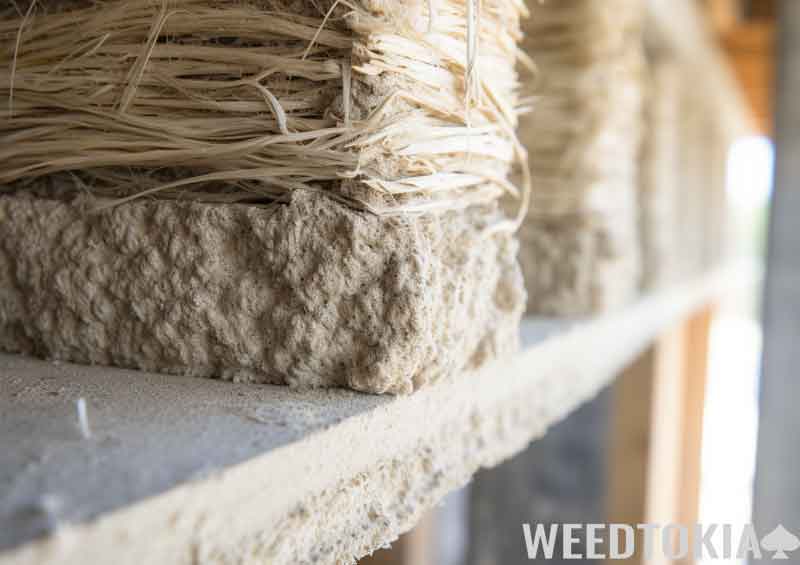
If you’re looking into building a bioclimatic home, it’ll be useful to note that the houses built with the use of hempcrete report greatly reduced heating costs and the very scarce -if at all, need for air conditioning.
For these types of buildings, on the average approximated cost of heating, we’re looking at the expense of $1.00 to $2.25 per square meter, but amazingly it has been demonstrated to be much more economical than that, as proven by an incredibly low yearly bill of $39.39 received by the owners of a house in Vendée, France built by architect JM Naumovic.
Hempcrete Frequently Asked Questions (F.A.Q)
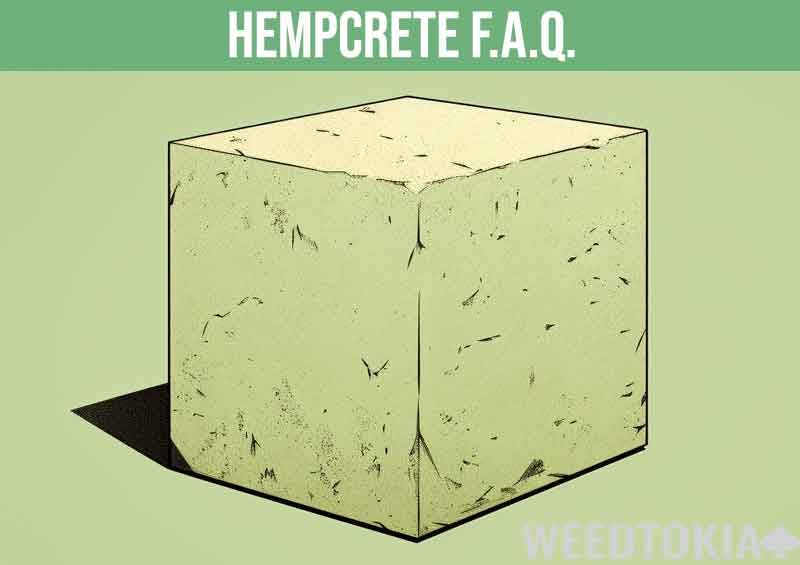
Let’s talk about some commonly asked questions about hempcrete below.
Is Hempcrete Stronger Than Concrete?
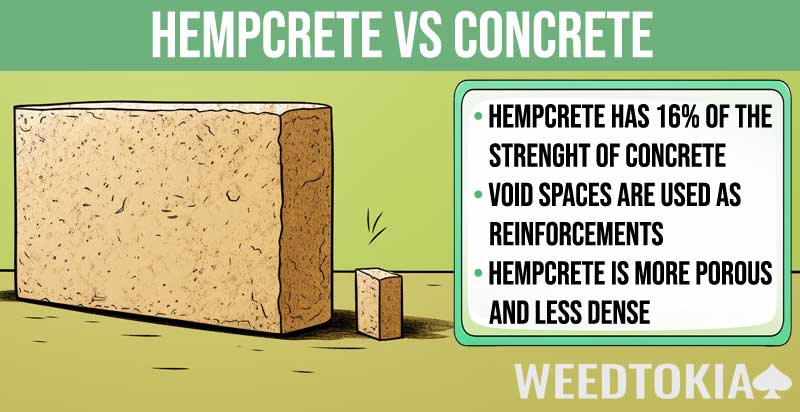
The short answer is no. Hempcrete only has 16% of the strength of concrete. However, it possesses many properties that concrete lacks, so it shouldn’t be directly compared to tensile strength alone.
To fix the reinforcement issue, for example, the UK has developed a hempcrete block with a void space in each block that allows reinforcement to be run through it and concrete poured in order to make a composite structural material. When designing this, the strength of the hempcrete is usually ignored because it is less than 0.2 MPa. As a result, when hempcrete is used in this way it provides permanent shuttering to the reinforced concrete.
The reason concrete is ‘stronger’ than hempcrete is because the consistency of hempcrete is considerably more porous and less dense. Concrete that is meant for structural purposes starts at 30MPa in compression.
The other reason hempcrete isn’t as strong as concrete is that it is made with lime as opposed to Portland cement, lime mortars, and limecrete intrinsically possesses a lower final compressive strength. This is why it takes a long time for it to reach its final strength.
Concrete is a very frail material. It isn’t ductile and lacks plasticity, just like lime-based mortars and limecrete. In other words, this kind of material can fracture suddenly. So when building with hempcrete if ‘fat lime’ is used contrary to hydraulic lime, it will absolutely gain strength from being exposed to air. This is relevant because it means that the hempcrete will be able to accommodate long-term small movement without significant loss of strength and permanent cracking because the lime will naturally heal itself just as newly exposed surfaces react with the CO2 in the atmosphere.
Is Hempcrete Legal in The US?
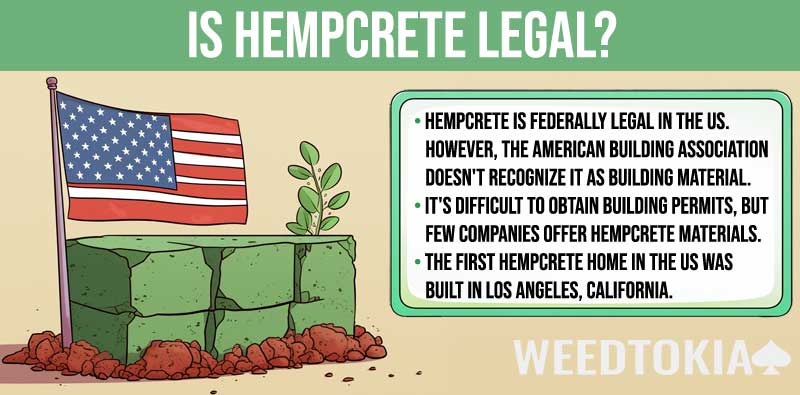
Hemp is federally legal in the United States and thus hempcrete is legal to build with, but since it can only be grown for research purposes, it is currently quite difficult to obtain.
It is worth noting that when building with a plant-sourced material like hempcrete, different states may have different regulations to approve the building process. We recommend you keep an eye out for any possible requirements your state may have.
Hempcrete is part of an evolving market, and circumstances are subject to change as it gains popularity in the construction stage, as shown by this article on UPI, an international news agency. Go on and take a look if you’re interested in gaining a wider range of understanding about the emerging market of hempcrete.
Where Do I Buy Hempcrete in the US?
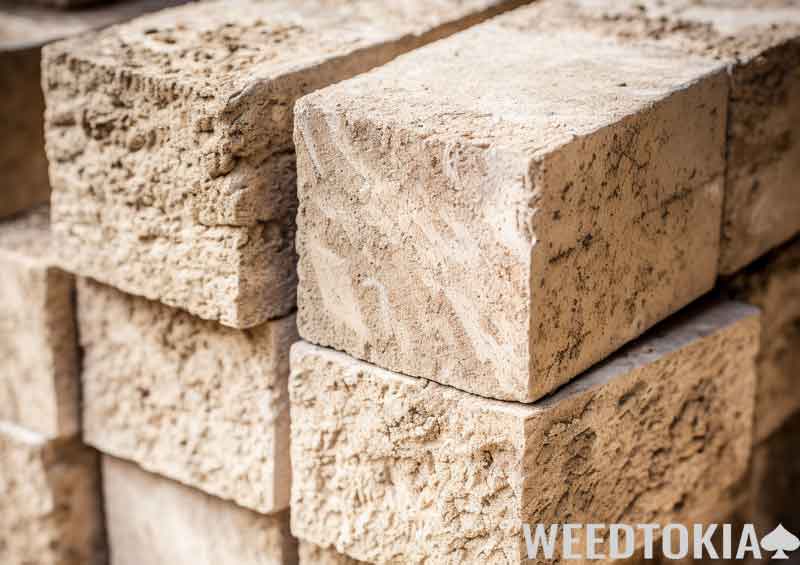
There are currently a few companies in the United States, like Hempitecture in Washington and Hempire in California, that specialize in sourcing, installing, and mixing hemp building materials.
It is possible to source hempcrete building materials such as building blocks, but as a rule of thumb, right now, most hempcrete structures utilize hempcrete that’s mixed on-site, and therefore you can’t outright buy it at a specialized store or hardware store.
Common knowledge about hempcrete and its uses in construction is actively spreading as more and more home-builders in the United States decide they want to opt for as many plant-based materials as they can in their building process.
Is Hempcrete Biodegradable?
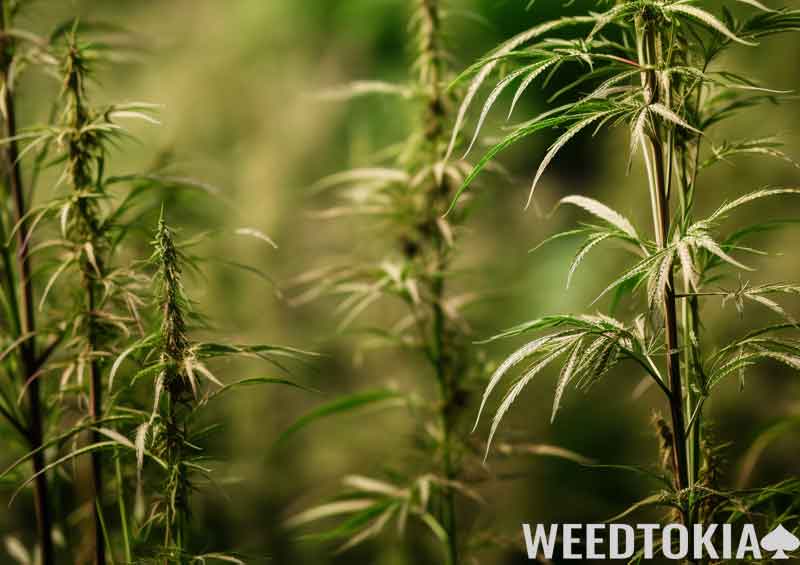
Yes, hempcrete is a plant-based composite, and since it doesn’t have the properties to release any toxic materials, hempcrete is 100% biodegradable.
Is Hempcrete Fire-Resistant?
Hempcrete’s composition makes it a building material with virtually zero capabilities to catch fire. If you were to put a blow torch on it for, say 2 to 3 hours, the hempcrete would start to carbonize, it would definitely start to decay and smoke a bit, but it would not set on fire.
Is Hempcrete Lighter than Concrete?
Hempcrete is 8 times lighter than concrete, given it has a porous structure with air pockets that allow for better temperature and humidity regulation throughout the walls built with it.
Is Hempcrete a Better Insulator Than Synthetic Materials (e.g., polyurethane)?
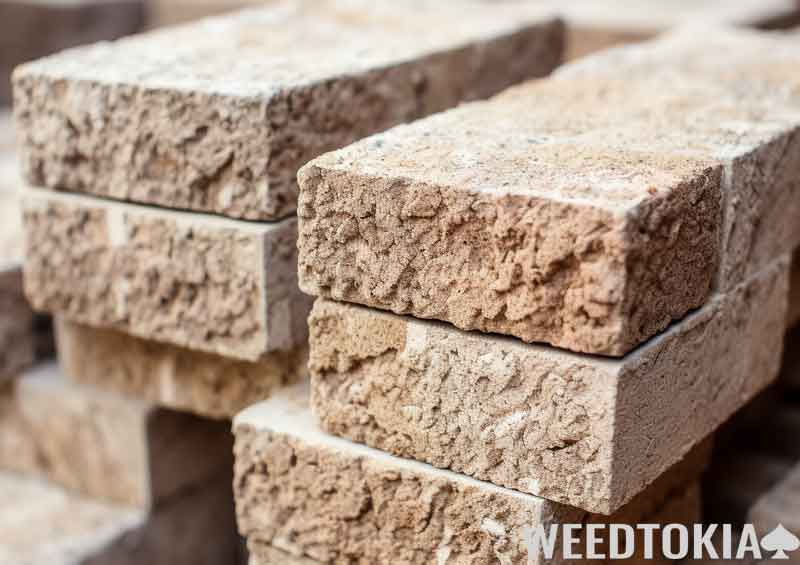
This question requires some consideration of the building specifications because its answer can vary depending on the type of project it’s going to be applied to. For example, on a renovation build, we’d need to consider if what’s being insulated is a monolithic concrete wall or if the wall will be completely rebuilt.
In the United States, hempcrete has yet to be added to the list of code-approved building materials, thus, we’re going to have to take a look at the U.K. as an example.
The usage of roughly 9.5 inches (24 centimeters) of hempcrete meets the insulation code in the U.K, compared with a synthetic material such as polyurethane which needs only 3.1 inches (8 centimeters). In these terms hempcrete is a less effective insulator than polyurethane, whereas, in new buildings where hempcrete is used to build a monolithic wall, the standard thickness can vary between 9.5 to 11.8 inches (24 to 30 centimeters).
As you can see, there’s no definite answer to this question, the ability of hempcrete to insulate will depend on a case-to-case evaluation. However, it is clear that on a new structure the use of hempcrete has significant advantages over the utilization of synthetic insulation materials that are not limited to its ability to slowly retain and release heat within the construction but also its properties to regulate humidity throughout the year for both hot and cold climates.
Is Hempcrete Expensive to Build With?
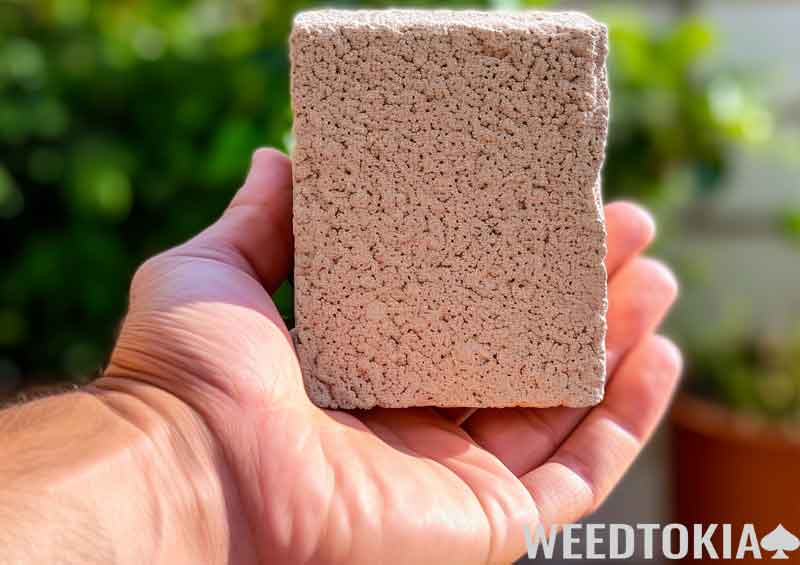
A construction with hempcrete shouldn’t exceed the cost of one with more conventional materials in an area where access to hemplime isn’t limited by law restrictions, but it might not have a significant monetary reduction.
Just like with any other material, the costs of building with hempcrete will rise or drop depending on the complexity of the design, exact specifications, and numerous other details to factor into the overall calculated cost. Comprehensively speaking, though, the cost should be about the same for a habitual “brick and block cavity” as it is for a hemplime one. This is including a high-specification insulation system.
Bear in mind that this comparison is only taking into consideration construction costs. Hempcrete’s exceptional thermal performance brings about significant monetary savings over the lifetime of the building, along with an improvement in the overall health of the indoor environment for the building’s occupants.
Is Hempcrete Soundproof?
The usage of hemp-based concrete may present various sound-proofing advantages when compared to other more conventional types of concrete owing to the hempcrete’s natural ability to absorb sound due to being porous. However, these qualities are diminished with an increased binder lime content in the biocomposite mix. Hempcrete walls are often given a skim finish resulting in the closing of the surface pores. Thus, a wall finishing that is reflective or smooth heavily affects the sound absorption capabilities that hempcrete might offer, rendering it not as effective for acoustic purposes.
There’s already been research in place on hemp-based panels for sound insulation purposes. Some sound studios have developed sound-proofing panels made out of hemp husk and hurds. These stylish panels are meant to be easily installed and displayed for their pleasantly aesthetic rustic look.
Is Hempcrete Earthquake-Proof?
Currently, hempcrete is not recognized as an earthquake-proof material, but studies show that it can be as much as 3 times more resistant to cracking than concrete. Hemplime also serves as a way of helping maintain the framing studs, keeping them well-supported during an earthquake.
What is the Hempcrete Casting Method?
In its early adoption, hempcrete was cast manually by basically filling up a wall as you would a normal concrete pour, except you would pile it up and compact it with your own hands. After some time, mechanical projection solutions arrived on the market, making the casting method increasingly more efficient.
With today’s technology, prefabricated bricks, walls, and insulating panels can be brought on-site to speed up construction. In this case, prefabrication does not equal the loss of the material’s benefits and performance for thermal and moisture control purposes.
It is a habitual practice to have a concrete mixing station with the addition of a concrete mixing truck as a solution used by building professionals in order to cast insulating screeds and roofs.
Did you Know?
Did you know that Henry Ford’s 1941 Model T Ford was made out of a hemp fiber composite similar to plastic? An article by Culture Magazine explains that the Model T by Ford was armored with hemp. To prove its efficiency and resistance, they had a man hit it with an ax, and it is said that no scratch was found. The author, Jasen T. Davies makes the connection that a similar hemp-based plastic composite could be used to protect humans too!
Military scientists are actively searching for a lighter option to Kevlar. Research has been done on the utilization of hemp to create such materials.
The Final Toke:
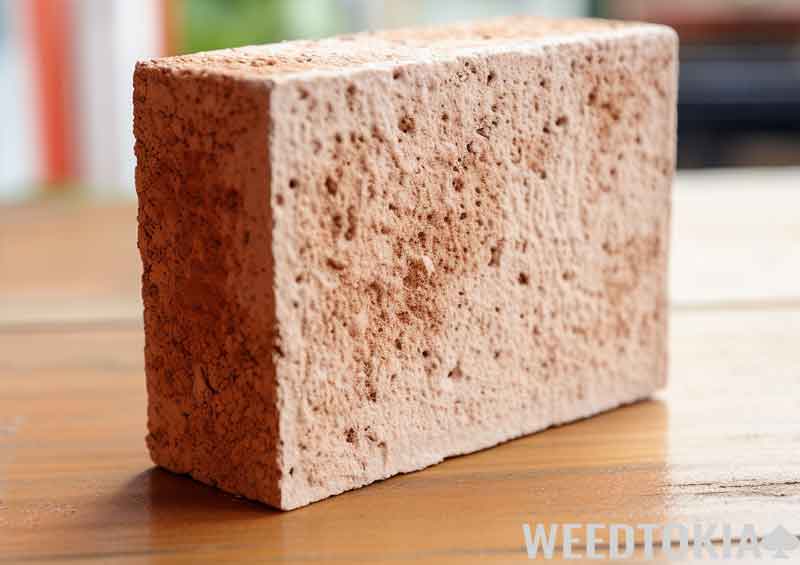
If you’ve read down this far, you now understand how great of a building material hempcrete is. We’ve gone over its uses within the current construction standards and laws, the pros and cons of using it, and how crucial it can truly be for the implementation of better and more ecologically sound building practices.
If you’d like to know more about the experience of owning and building a house using hempcrete, Daily Breeze has an article written by Megan Barnes about the first permitted hempcrete home construction in L.A. County by a Rolling Hills couple.
Hopefully, next time you’re in need of upgrading your insulation, renovating your home, or even building a structure from the ground up you’ll consider using hempcrete to do so. You’d be contributing to a greener and cleaner future for everyone.